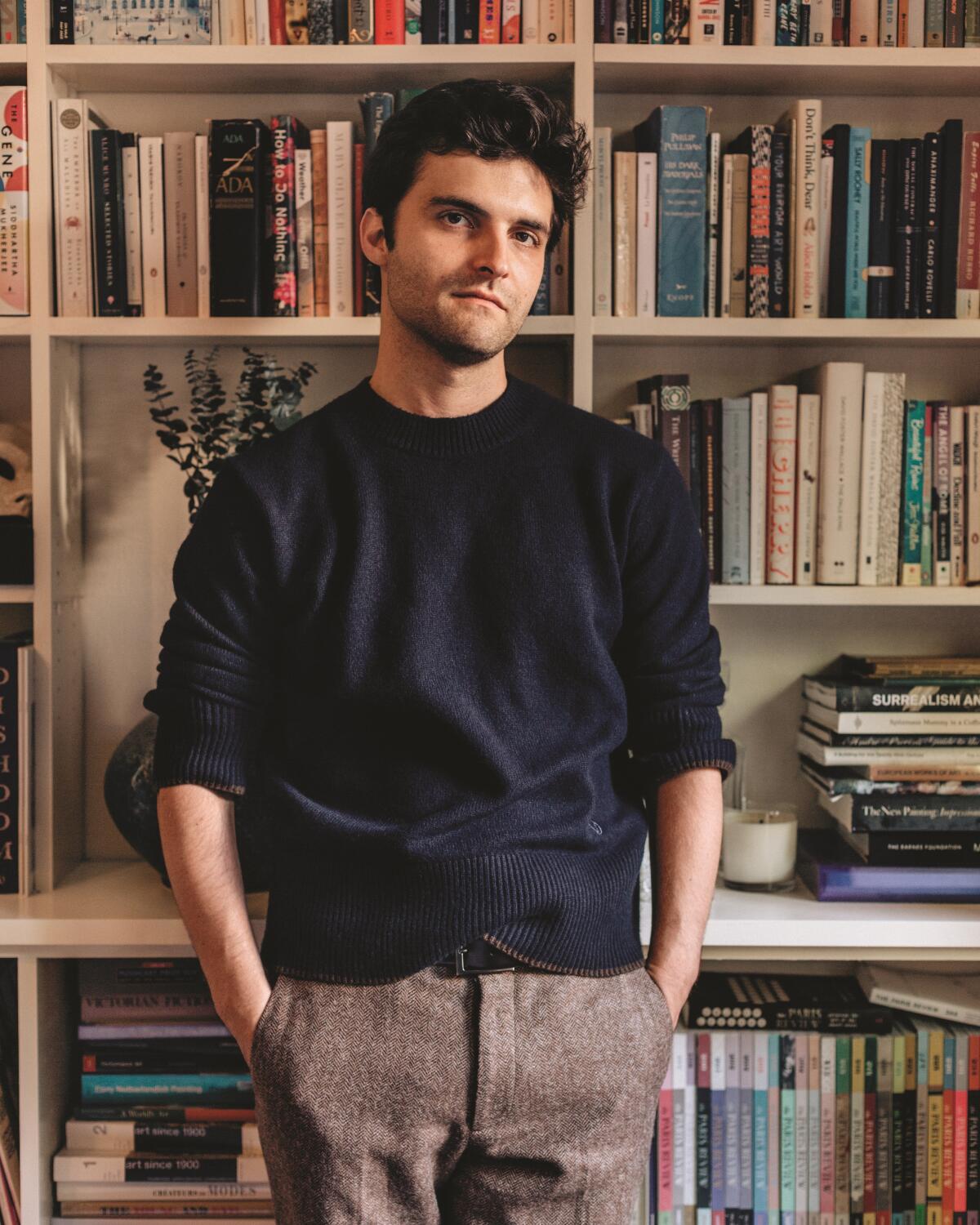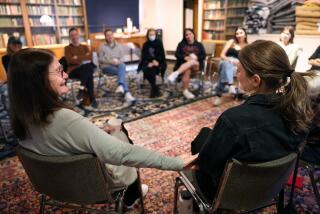Would you want a chatbot to help you through grief?

Book Review
The Grief Cure: Looking for the End of Loss
By Cody Delistraty
Harper: $27.99, 208 pages
If you buy books linked on our site, The Times may earn a commission from Bookshop.org, whose fees support independent bookstores.
When is grief too much grief? Journalist and editor Cody Delistraty examines this question in “The Grief Cure: Looking for the End of Loss,” a hybrid memoir through which he explores the role of Western science, medicine, group therapy and culture in dealing with personal loss. The book revolves around the nearly decadelong grief Delistraty struggled with following his mother’s death from cancer, emotions so all-consuming that his first chapter starts with the question, “Can a Form of Grief Be a Disorder?”
Delistraty is a careful and talented writer; he takes seriously his role as the reader’s guide to “a better understanding of where the future of grief and the ways facing it may be headed.” He begins with scientific approaches to the definition of excessive grief, its distinction from depression, and the question of whether it can and should be medically treated. Yet Delistraty is more interested in the wider array of options available to deal with the kind of grief that interrupts one’s long-term well-being, especially how to handle grief as an emotional as well as “bodily experience.” The memoir gives us a range of experiences through his eyes, with a journalistic bent. Delistraty tries out laughing therapy, and therapy utilizing literature and art; meditation; psychedelics and pharmacological treatments. He also participates in a breakup boot camp, experiences Día de los Muertos rituals firsthand and reads other memoirs on grief. All the while, he provides analyses on the possibilities of managing excessive grief rather than verdicts on the effectiveness of these attempts at a “grief cure.”
Despite the depth with which Delistraty researches, some of the conclusions he draws about the role of technology in managing grief are surprising in the way they reflect a naive trust. He details the emergence of chatbots such as Replika and Project December, sharing his own experience “conversing” with an AI version of his deceased mother. Delistraty links these methods to 19th and 20th century Spiritualism, whose adherents used photographic technology and telegrams to communicate with the dead and provide a sense of solace to the bereaved.
Delistraty acknowledges the distinct difference regarding AI and its hold on predicting, and thus shaping, our tastes and decisions in all aspects of our lives. But he posits that AI technology, in tandem with a treatment team, could create an “efficient” grieving process that benefits businesses by reducing employee downtime as they deal with personal loss. For Delistraty, since work expectations around grieving are not set to change anytime soon — he notes the average U.S. bereavement leave is three to four days — AI technology could be considered “the best way forward.” Yet perhaps Delistraty’s goal of guiding the reader in all the possibilities of dealing with grief has overridden any judgment on the actual need or effectiveness of AI tech, or the fact that it is ultimately a finite and limited (and environmentally damaging) resource. When Delistraty’s chatbot credits run out, the comforting alternate reality of talking to his mother ceases to exist; “she dies once more,” he writes.
The emphasis on science and technology around what are ultimately considerations of ethics makes me wonder if Delistraty had ever seen an episode of the sci-fi series “Black Mirror.” It isn’t clear that he fully thinks through the implications of some of the issues he discusses. Even an interesting dive into the role of perception and recognition of one’s thought patterns in grief is followed up by chapters on utilizing medicine to solve humanity’s “most profound problems,” and the science that would eventually make the deletion of memories possible. Despite briefly mentioning the 2004 film “Eternal Sunshine of the Spotless Mind,” which depicted the deleterious effects of deleting painful memories on personal growth, it isn’t until a scientist tells him that such interventions do not address the fundamental problems underlying intractable grief that Delistraty concedes that even if possible, memory deletion may not be the best idea.
What is most striking is the loneliness of Delistraty’s journey, and his seeming faith in the products of the very capitalist systems, such as the tech industry, that have standardized such loneliness. The lack of mourning ritual at the moment of death brings home one of the many tragedies in the mishandling of the COVID-19 pandemic at its outbreak, leading to the dismembering of the communal rituals of life, particularly weddings and funerals.
As Delistraty notes, funerals themselves have become an industry with rituals, as well as an industry that nonetheless does not require them. Throughout the memoir, I found myself asking why the author didn’t consider the issues of community and ritual as fundamental to confronting his prolonged grief. Although Delistraty addresses these subjects, his prose reads more like intellectual analyses rather than an understanding of ritual as not merely an individual interaction between mourner and deceased, but part of how we mourn collectively, as practiced in many cultures as well as historically in the United States.
Though Delistraty pursues wide-ranging “cures,” treatments and therapies, it appears that the real issue underlying prolonged grief lies in the last two sentences of the prologue, when he describes what happened mere moments after his mother passed away: “We stood by her body. Then, a knock at the door — a paramedic with a body bag.”
While Delistraty covers “community” as a wide-ranging definition — anything from internet culture to group therapy to writers of grief memoirs — he does not turn the lens onto loved ones and family as a community. He is consistently perplexed by his mother and her difficult upbringing and religious faith, wishing he had understood her better, but does not meaningfully seek to understand her life until as a last resort. His father, the widower, is only mentioned in the beginning of the book and then taken up again only in the last chapter, “Home.” While spending time with his father and brother, Delistraty briefly ruminates on his father’s choice to stay in the same house where his mother took ill and eventually died, concluding that it was “beyond” his understanding.
It is hard not to think that an emotional wall exists in regards to Delistraty and his family, one that could be an overlooked yet fundamental factor in the nature of his grief. Everything up to this point had been about his individual striving to manage grief, but even the chapter on community does not reflect any attempts to share the experience of grieving with his own inner circle.
Delistraty’s investigation into the future of how we might grieve surveys the possibilities that lie ahead. But wouldn’t it be a greater loss if the only options available to us were privatized and individualized? There is a fundamental human need to seek solace not just within, but also outside of ourselves and with one another. It is true that, as Delistraty says, grief comes for everyone; his memoir makes it clear that we must fight harder as a society to not have to face it alone.
Raha Rafii is a writer and historian. She writes about law, cultural heritage and digital research technologies.
More to Read
A cure for the common opinion
Get thought-provoking perspectives with our weekly newsletter.
You may occasionally receive promotional content from the Los Angeles Times.










